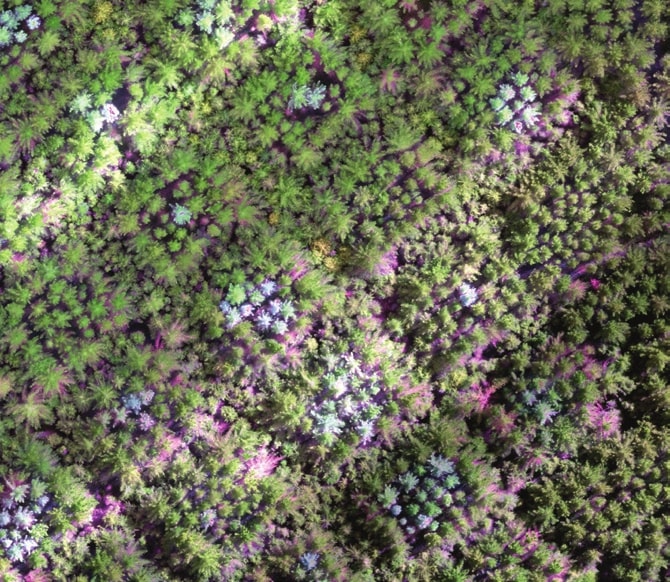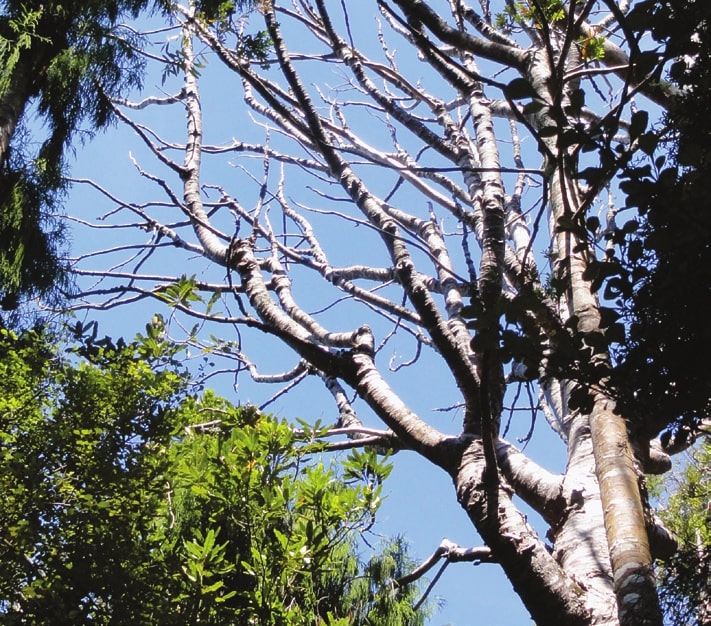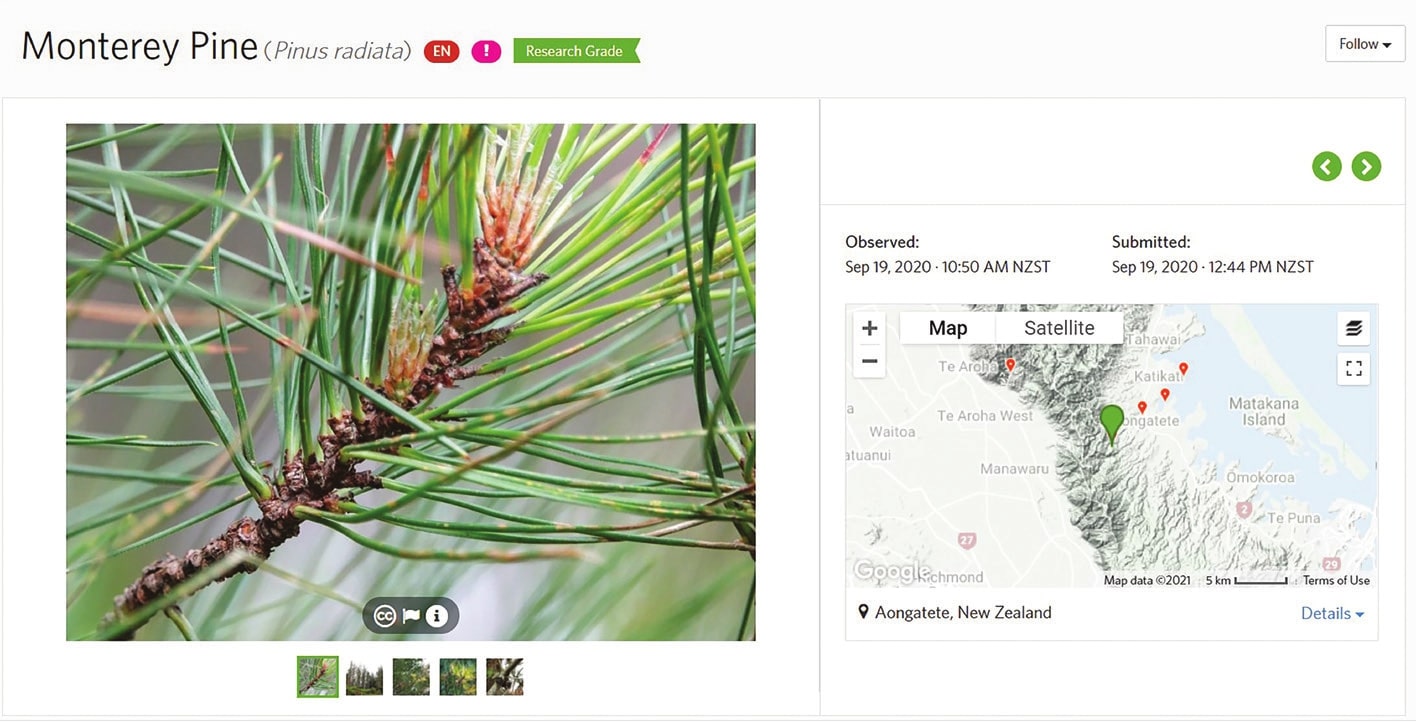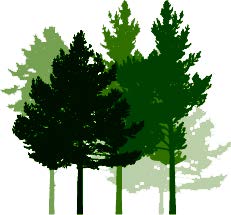Healthy, productive forests: Fighting past, present and future pathogens
Michelle Harnett, New Zealand Tree Grower May 2021.
Science, biosecurity and keen eyes on the ground are working to protect all our forests from new pathogens. Radiata pine makes up more than 90 per cent of the production forests which cover around 1.7 million hectares of New Zealand. It is risky for the forest industry to be largely based on one species. A new pest or pathogen arriving on our shores could endanger an annual export revenue approaching $7 billion.
Research into controlling pathogens, changes to forest management or losses simply being deemed acceptable have reduced damages from various pathogens over the years. But past successes do not guarantee a problem-free future. A changing climate and ever-increasing global trade mean the arrival of the next exotic pathogen is inevitable. Combining a reduction in genetic variation and a possible decrease in resistance to new diseases with the movement towards more use of planting clones, we need to be on our guard in our forests at the border and be prepared to respond to the next incursion.
Growing resilient forests
Forest pathologists have the task of combatting foliar diseases and keeping radiata pine forests healthy and productive. Much of this work in now included in the Scion-led Resilient Forests research programme. This follows on from the earlier Growing Confidence in Forestry’s Future and Healthy Forests Healthy Future programmes. The remit of the new programme includes working to protect forests from diseases and pathogens. As a whole, the programme is focussed on growing healthy trees with desirable wood qualities using good planning and forest management to cope with risk and uncertainty.
The current work is concentrating on better prediction, detection and control of diseases as well as looking at how tree genetics, silviculture and environment can affect tree health. Using red needle cast as an example, researchers have looked at disease cycles and environmental and seasonal conditions to
develop models that forest managers can use to predict how severe disease outbreaks might be, and to help plan control operations. Soil moisture, humidity, wind, rain, temperature and topography have been identified as some of the factors that increase the likelihood of red needle cast. The model that has been developed for red needle cast is also being extended to other needle diseases.
Big, bad needle diseases
Dothistroma needle blight, cyclaneusma needle blight and red needle cast are among the diseases which cause loss of needles or defoliation in radiata pine. Dothistroma was first seen in New Zealand 1962. By the end of the 1960s, the disease had spread across most of the North Island. By the late 1990s, it had spread across the South Island.
Dothistroma is widespread in warm, moist conditions and symptoms usually start appearing toward the end of summer and become most apparent in winter. The estimated economic cost of dothistroma to the New Zealand forest industry is around $20 million a year, including lost productivity and the cost of chemical control measures.
Cyclaneusma minus was first documented on radiata pine in New Zealand in the 1950s. Cyclaneusma is widespread in the warm moist conditions found within the central North Island and symptoms are usually most severe in spring. The cost of cyclaneusma is probably even higher than that of dothistroma, with some estimates as high as $38 million a year for trees aged between six and 20 years.
Red needle cast
In 2008, a new needle disease which defoliated radiata pine was reported near Gisborne. Caused by Phytophthora pluvialis, infected needles develop lesions, eventually turn red and are prematurely cast, therefore the name red needle cast. It mainly affects older needles, during which time the new needles remain healthy and trees are rarely completely defoliated. Symptoms can start any time between summer and winter and are usually most severe from winter onward.
Incidence of the disease has varied between years and regions. Red needle cast infection tends to be more prominent on ridge tops where needles are exposed to continual wet and misty conditions, rather than sheltered gullies and hollows where dothistroma and cyclaneusma are more common.
Quantifying the productivity loss associated with red needle cast is tricky. One study reported an average growth reduction of 16 per cent over a three-year period. In many sites or years, the incidence and severity are not high enough to cause any significant effect.

Dothistroma and cyclaneusma are fungal diseases. The organism responsible for red needle cast is a water mould or oomycete. These pathogens are widespread in warm, moist conditions and changes in humidity and temperature are likely to change the risk of disease. Climate change simulations run by researchers showed that the severity of dothistroma and cyclaneusma are likely to decline in the major plantation areas in the North Island.
However, the diseases could increase in severity for large areas of the South Island. It is more difficult to predict how red needle cast might respond to climate change as data is limited.

Detecting disease
Detection and monitoring of outbreaks using remote sensing technologies are also being explored. Laser scanning and measuring changes in the light emitted by foliage have been able to pick up changes before they are visible to the naked eye. Forest scanning can be carried out using sensors mounted on drones, other aircraft or satellites. Satellite data is currently a little less precise but regular passes overhead means changes may be detected more quickly.
Molecules and genes
As well as working at tree and forest scale, methods have been developed to look at how hosts and pathogens interact at a molecular scale. This has included studying how the pathogens attack cells – looking at which genes are active and what chemicals are produced to undermine host resistance. Researchers are searching for common elements within a genus such as Phytophthora and across the main needle diseases. The hope is that if common elements can be identified, this will offer a fast way to screen for resistant plants and trees.
Infected and resistant host plants produce different chemicals from uninfected plants, even before symptoms can be seen. This offers an early detection method as well as clues on breeding resistance and other ways to increase plants’ resilience.
At a gene level, the diversity of pathogen genomes can help work out where a new disease came from and how it got here. In turn, this can help bolster biosecurity measures. DNA detectives have studied the genome of Phytophthora pluvialis, which was first isolated from mixed Douglas-fir and tanoak forests in the US Pacific north west.
Scientists collected samples of the pathogen from the United States and New Zealand, then looked for the presence or absence of over 1,500 known mutations. They used this information to plot the geographical differences and genetic relationships between populations. By following the DNA trail, it looks like there was one introduction into New Zealand from the Cascades region in Oregon. As to how and when P. pluvialis arrived, it was probably via infected Douglas-fir material or infested soil before the introduction of increased biosecurity restrictions in the late1990s and early 2000s.
Resistance is possible
Radiata pine breeding for increased resistance to fungal needle diseases started in the 1960s with stock resistant to dothistroma and cyclaneusma being made available. Thanks to a lucky break, one of the clones used in the initial investigations into red needle cast turned out to be naturally resistant and it is being tested in the field
The possibility of resistance to multiple diseases is also being investigated. Scion geneticists have found genotypes which are highly resistant to dosthistroma and cyclaneusma. The implication is that selection based on resistance to dothistroma could allow for simultaneous indirect selection for resistance to cyclaneusma. Unfortunately, resistance to red needle cast has not been found to be associated with resistance to the other two pathogens.
What could be lurking in the woodwork?
The arrival of a new radiata pine pathogen at some stage is inevitable. For example, plant pathologists believe the spread and detection of new Phytophthora pathogens is a matter of when, not if.
Phytophthora can be very nasty. Their name translates from Greek as plant destroyer. Species in this genus affect fruit and vegetables, shrubs and trees worldwide. Phytophthora infestans caused the Irish potato famine. P. ramorum is behind sudden oak death in Europe and North America. In Chile, P. pinifolia causes similar problems to red needle cast. In New Zealand, different Phytophthora organisms cause collar rot in apples and kauri dieback, as well as red needle cast.
Studies of ecosystems worldwide have found many undescribed Phytophthora species that could be a reservoir of potential biosecurity risks. At least 300 possible species are believed to exist, but only about two thirds have currently been reported. The countries which have reported the most species have high gross national incomes and high levels of air transport – in other words countries like New Zealand.
As a side note, pathogen spread goes both ways. New Zealand also has native species. Phytophthora kernoviae is considered to be a recent invader in the United Kingdom and the Republic of Ireland, where it was first identified in early 2000s. It is also found in New Zealand and Chile where it does not appear to affect indigenous plants. After examining the genomes of P. kernoviae samples from Chile and New Zealand, scientists now believe the Chilean and New Zealand populations have descended from an ancient Gondwana population and that local plants have co-evolved with these organisms. It seems highly likely that P. kernoviae was inadvertently exported to Britain from New Zealand.
Be aware – constant vigilance
Biosecurity experts are very conscious of the need to beware and to prepare for new Phytophthora species and others. Potential threats can be identified and measures taken to postpone their arrival as long as possible
One pathogen New Zealand plant pathologists are keeping their eye on is Lecanosticta acicola, the cause of brown spot needle blight. The blight inhibits growth and can kill young pines. So far, it is found in the northern hemisphere, central America and Columbia. It would be most likely to arrive in New Zealand by human-mediated movement of infected plant material.
Local developments are also watched closely. Cypress canker Seiridium spp., which has always been associated with cypress species, and is not known to cause disease on pine anywhere else in world, has been detected on Pinus pinaster and radiata pine in the form of small cankers on branches and twigs. Scion pathologists are currently taking a close look at the pathogens isolated from samples from three locations around New Zealand.
Another organism coming in for scrutiny is nectria lute canker Neonectria fuckeliana. It is already present in the South Island, but in 2020 it was discovered north of its previous known boundary. Work is needed to investigate if the pathogen is on the move and if climate or genetic changes are responsible. Interestingly, marked differences have been seen in individual tree responses to infection. Some trees inoculated with the pathogen have not become diseased, suggesting the presence of natural resistance.


Threats to indigenous species
Biosecurity is not just about protecting commercial tree species, but also looking after indigenous species. Kauri dieback is probably the best-known New Zealand example of an organism thought to be new to New Zealand infecting a local species that has little to no natural resistance.
Kauri dieback is caused by Phytophthora agathidicida. It lives in the soil and infects kauri roots, damaging the tissues that carry nutrients and water within the tree, effectively starving the tree to death. Kauri dieback was first recorded on Great Barrier Island in the early 1970s. In 2006, kauri were observed to be dying in the Waitakere Ranges and an investigation uncovered the presence of the soil pathogen eventually given the name Ph. agathidicida.
To date, there is no proven cure for kauri dieback, although injecting the chemical phosphite into trees has shown some promise. However, this is not a long-term solution. Nearly all untreated infected kauri die. However, trees which show natural resistance have been identified, and molecular methods developed.
Other indigenous trees are also likely to be vulnerable to Phytophthora. For example, totara can exhibit needle browning and needle loss in the lower part of the crown. This believed to be caused by an as yet undescribed species of Phytophthora referred to as Phytophthora taxon totara or PTT. Whether or not this is a new pathogen or one that is indigenous and behaving diferently under changed environmental conditions, is also unknown.
Eyes on the ground and all around
New Zealand biosecurity agencies are working hard to keep unwelcome invaders out. Most new pathogens and pests are likely to enter the country through ports and airports, and monitoring is prioritised in those areas. Outside the main centres, the team of five million comes into play to support biosecurity. In the case of owners of small to medium forests, you know your farms and forests and are in the best position to report anything that looks out of place.

There are a couple of reporting options. One is to take a picture and note the location if you are not using smart phone then send it to iNaturalist via inaturalist.nz or the app, where experts who volunteer their time check out the oddities people find Alternatively, the Ministry for Primary Industries has a pest and disease hotline on 0800 80 99 66. According to the Ministry for Primary Industries around 10,000 suspected pests and diseases are reported to them every year and 750 of those lead to a formal investigation. It can be tempting to take samples, but this has the potential to spread any new diseases.
Towards healthy forests
Invasive forest pathogens have the potential to cause dramatic damage to our plantation forests, natural forests and woody ecosystems with far-reaching economic, environmental and social consequences. Whether it is pathogens arriving from overseas or native organisms causing disease due to changing conditions, this is a problem that is not going away.
As a country and industry, our best response investigating the origins of diseases of trees is early detection of harmful new pests and diseases. It is the key to eradication because once an organism is established it is nearly impossible to get rid of. The general surveillance that we can all contribute to is the most important cornerstone of biosecurity in New Zealand. Let us keep our forests healthy.
The Resilient Forests Programme is supported by funding from Forest Growers Research and Strategic Science Investment Funding provided by MBIE. For more information contact peter.clinton@scionresearch.com or stuart.fraser@scionresearch.com

 Farm Forestry New Zealand
Farm Forestry New Zealand